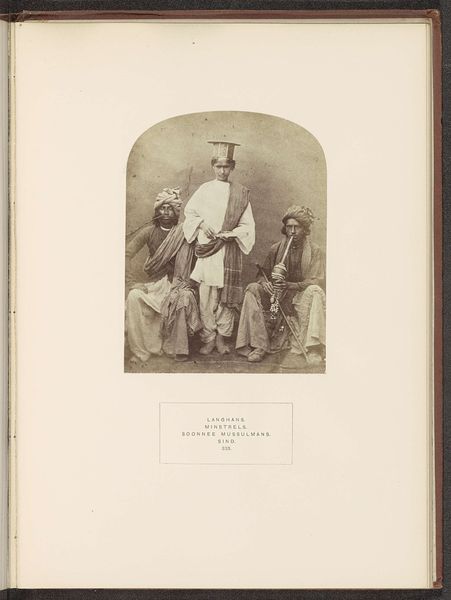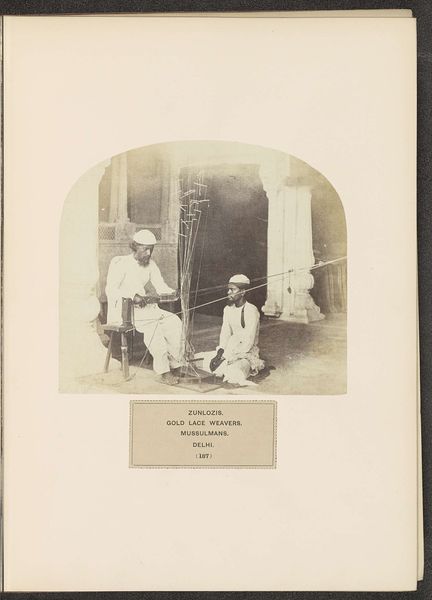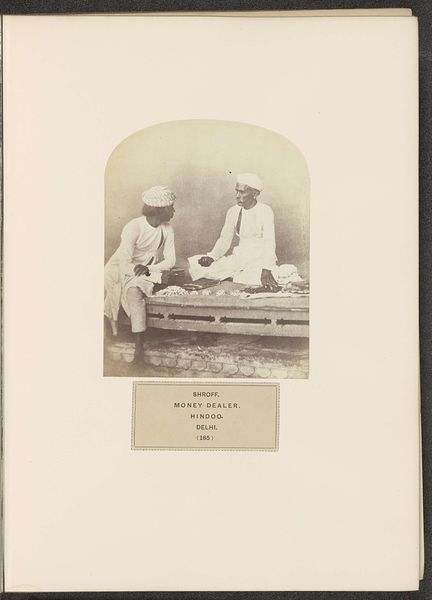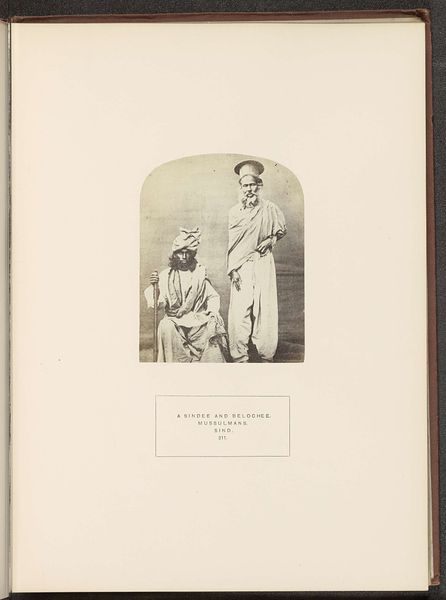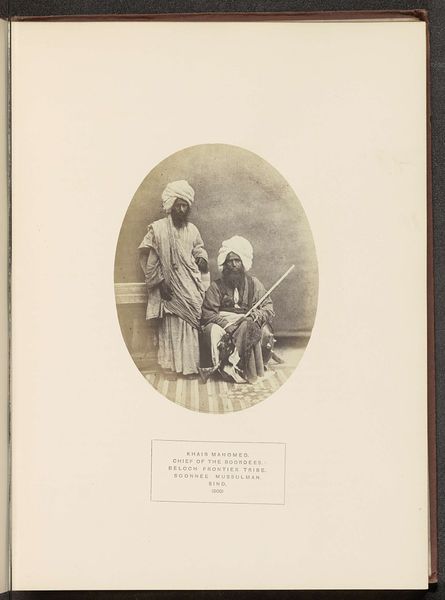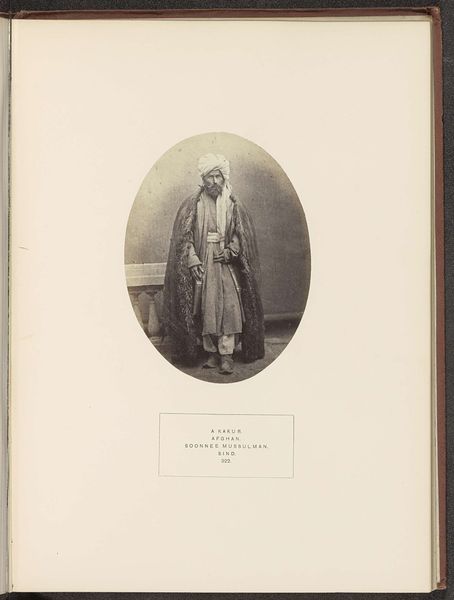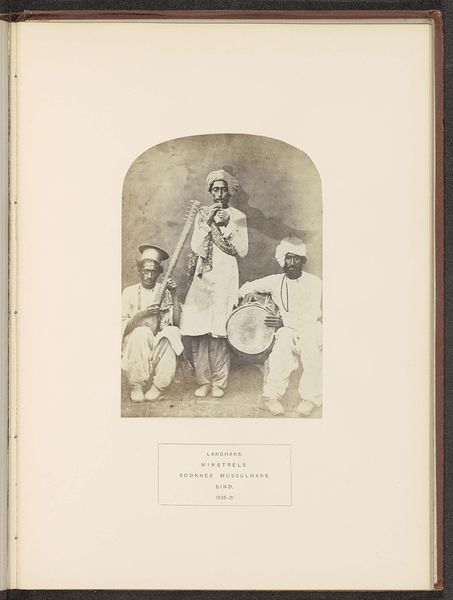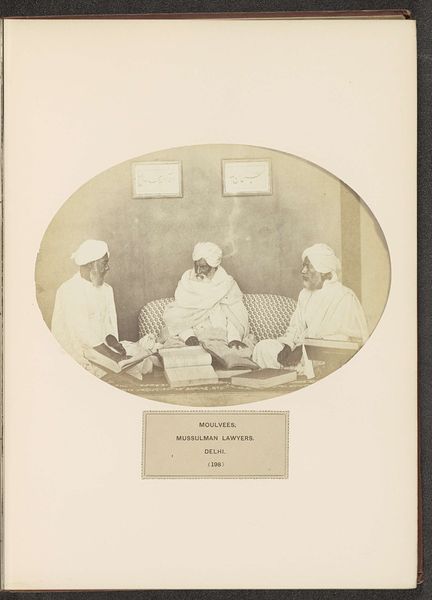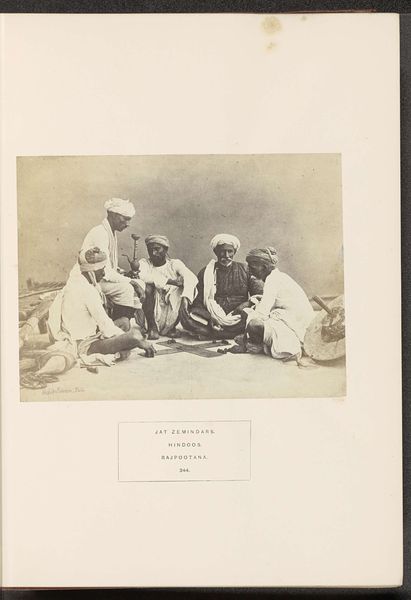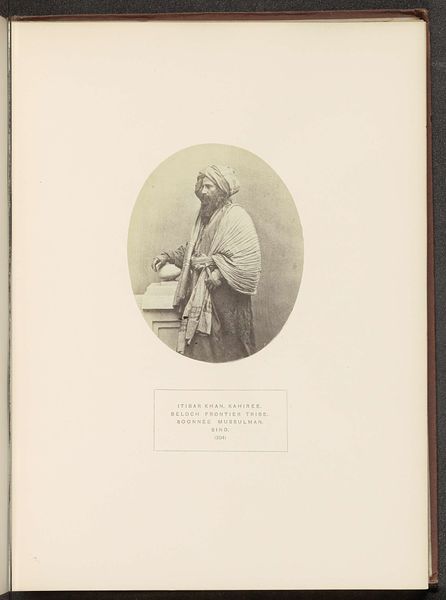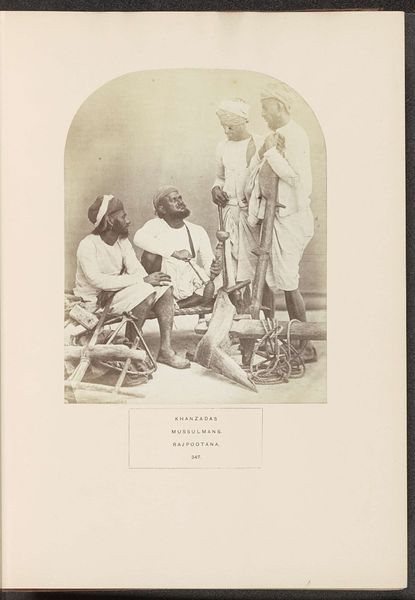
Portret van drie onbekende handelaren van graan in Sindh before 1872
0:00
0:00
photography
#
portrait
#
photography
#
orientalism
#
genre-painting
Dimensions: height 144 mm, width 105 mm
Copyright: Rijks Museum: Open Domain
Curator: The photograph before us, attributed to Henry Charles Baskerville Tanner, is entitled "Portret van drie onbekende handelaren van graan in Sindh," taken before 1872. Editor: It feels strangely posed, almost like a still from a play, with a whiff of the theatrical about it. A careful grouping for the camera, a tableau of trade, no? Curator: Indeed. Observe how the composition uses a limited tonal range, common for early photography, creating a study in contrasts. The careful arrangement of figures around the weighing scales underscores the photograph’s engagement with Orientalist tropes. Editor: And those faces, weathered by sun and experience. There's such quiet intensity. I wonder what they made of the process of being photographed – being rendered as objects of study for the foreign gaze. A young apprentice by his side echoes a very different sense of understanding to the work they do and will come to be doing. It hits me as both intimate and remote. Curator: That remote quality stems in part from the objective approach to portraiture. We find elements conforming to early Orientalist photography, that serves to re-confirm Europe's vision and expectations towards people from a distant land, even within the claim to scientific record. The play of light across the cotton clothing creates sharp lines; texture and form create the visual hierarchy. The scales represent the practical, financial world of trading with Sindh. Editor: Ah, yes. The colonial gaze is quite present. But despite that, it’s hard to escape the dignity, and the very human pride in their trade. I find myself wanting to know their names, to move past the anonymity that Orientalist art often imposes. The work also makes me think of a kind of frozen time... almost a memorialization that elevates the moment, which makes it stand out so strikingly. Curator: A keen observation, precisely the power of images and their ability to transcend. Photography as memory, as symbol, that operates in both time and outside of time itself. Editor: I will leave it with this feeling. A reminder of both the past’s complexity, its echoes in how we see today and the stories that art has yet to reveal.
Comments
No comments
Be the first to comment and join the conversation on the ultimate creative platform.
